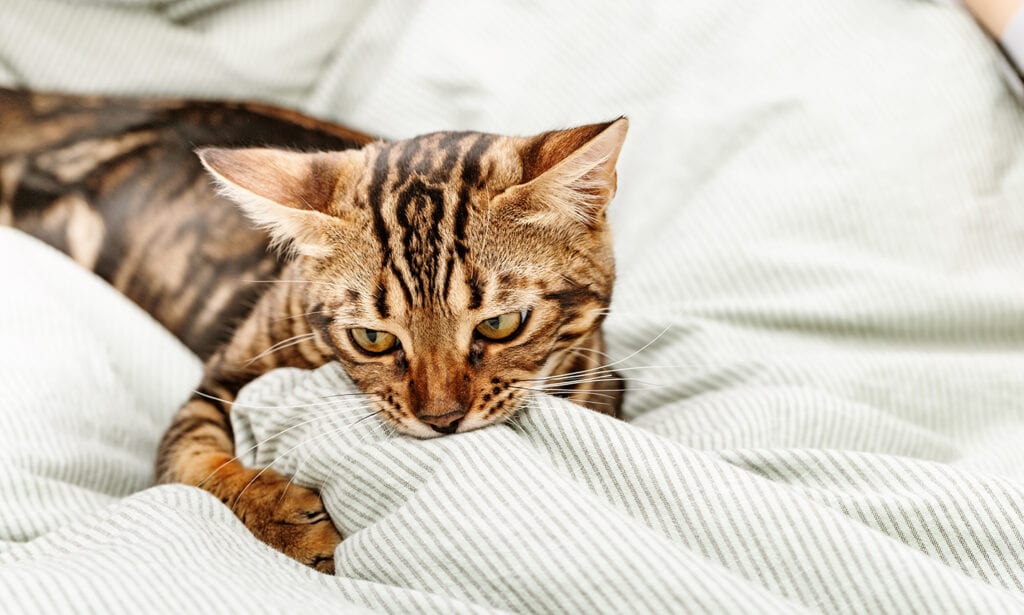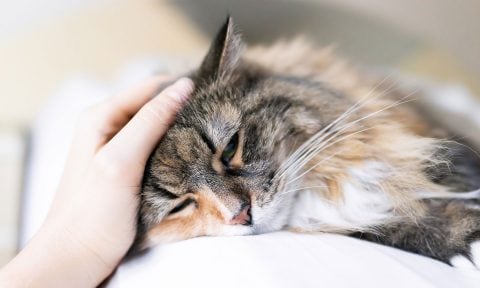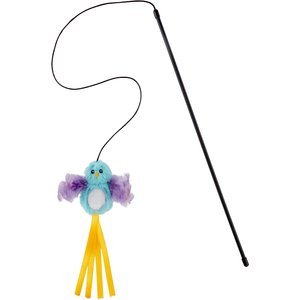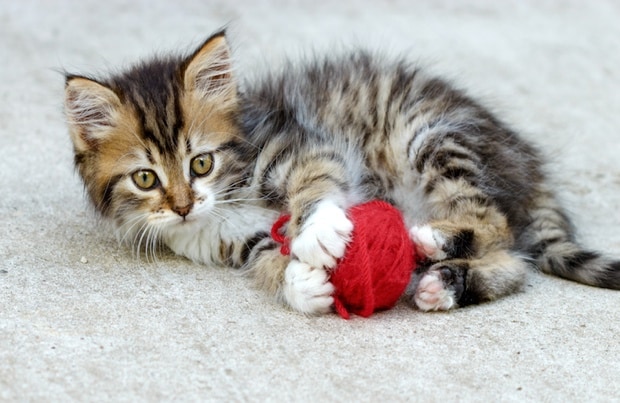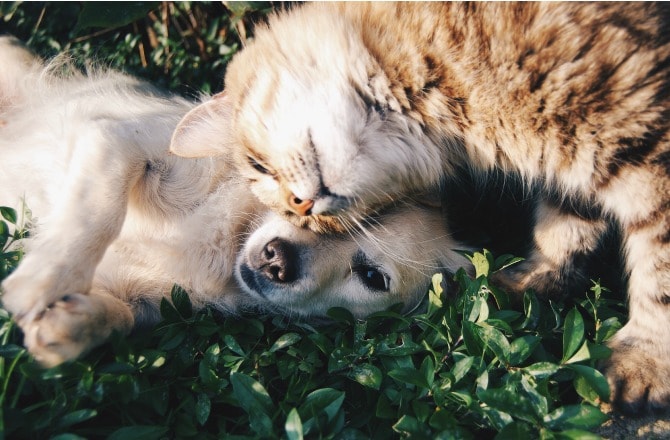Long after kittenhood, some adult cats continue to suckle, and the behavior can be perplexing (and maybe even distressing) to pet parents. While unusual to us humans, suckling is actually a completely normal behavior among cats and is rarely a cause for concern. However, if you would like to discourage the habit—or simply learn more about your four-legged feline friend—it helps to understand the motives and meaning behind this behavior.
To increase your kitty IQ, read on for everything you need to know about suckling in cats, from why it happens to how to stop it.
What Is Cat Suckling?
Suckling is a natural instinct left over from your cat’s early days snuggling up to mom and nursing.
“When kittens are nursing, the act of suckling on their mother provides them not only with nutrition, but also comfort and security,” says Dr. Sabrina Kong, DVM, a California-based veterinarian.
Some cats stop suckling once weaned, while others continue to do so into adulthood, sucking on soft objects—such as blankets, T-shirts or even their pet parent’s fingers—in lieu of mom. Many times, it’s accompanied by “kneading” and purrs.
Why Does My Cat Suckle?
Reasons cats continue to suckle into adulthood include:
- Self-soothing: “The repetitive motion and the sensation can be calming for them, much like how some humans find repetitive actions, like knitting or tapping, soothing,” says Dr. Kong. Suckling can be compared to thumb-sucking among children, adds Stephen Quandt, a certified feline behaviorist and founder of Stephen Quandt Feline Behavior Associates.
- Early weaning: Early weaning is associated with stress-related behaviors in adult cats, explains Quandt. Kittens who are separated from their mothers early may be more likely to suckle into adulthood.
- Genetics: “It’s more common in Oriental breeds than in European breeds,” says Quandt. Such breeds include Siamese, Burmese, Tonkinese and Balinese.
“For most cats [who suckle], this is a benign behavior,” Quandt says.
Why Do Cats Suckle on Blankets, Specifically?
Cats are known to suckle on a variety of objects and surfaces, with blankets being a classic choice.
“Blankets, in particular, seem to be a favorite for many cats to suckle on,” says Dr. Kong. “The soft texture of blankets can mimic the feel of their mother’s fur, making it a comforting item to latch on to.”
Similarly, cats may suckle on knit sweaters, textured pillows and plush toys.
When To See a Veterinarian for Cat Suckling
In most cases, suckling is a perfectly normal, healthy behavior for cats. However, because suckling can be a self-soothing behavior, Quandt explains that it can also be a symptom of a behavioral issue, like stress or boredom, or an underlying health issue that’s causing pain.
Other signs of stress or pain may include:
- Loss of appetite
- Increased sleeping
- They’re avoiding you
If you suspect your cat is suckling in response to pain or stress, a prompt check-in with your veterinarian is in order.
Additionally, excessive suckling can lead to other, potentially dangerous, behaviors—including overgrooming, tail chewing and choking—which require a veterinary visit.
“If your cat is swallowing parts of the thing they are suckling, or exhibiting more serious behaviors like overgrooming, then consulting with your vet is in order,” says Quandt.
Learn more about overgrooming.
How To Stop a Cat From Suckling
Suckling is usually harmless. However, if you’d like to discourage your cat’s suckling behavior (and save your blankets), there are a few strategies to try.
Offer a Replacement
If your cat is damaging a favorite blanket, try replacing it with a plush, textured cat toy, pet blanket or other blanket you don’t mind giving up, suggests Quandt.
Initiate a Play Session
The next time your cat begins to suckle, grab the feather wand! Not only will playtime distract your cat from suckling, it could provide the mental stimulation and connection they may have been seeking, says Dr. Kong.
Practice Positive Reinforcement
When your cat chooses not to suckle, remember to acknowledge and reward the behavior. “Positive reinforcement can be effective, like praising the cat when they choose not to suckle or redirecting their attention and then rewarding them,” says Dr. Kong.
Never Punish Your Cat
If your cat continues to suckle, do not react negatively. “Don’t shout at or punish your cat, as this will add stress and may make it worse,” says Quandt. Instead, continue to offer redirection and consult your veterinarian if the habit is excessive or if you’re concerned that it has become a compulsive disorder.
Cat Suckling FAQs
Q:
When do kittens stop suckling?
Q:
Why do cats suckle on blankets?
Q:
Why does my cat suckle in his sleep?
In most cases, suckling is a perfectly normal habit that some cats practice long after kittenhood. However, if you’re concerned that your cat is suckling too much or is in distress, it’s important to contact your veterinarian.
Curious about your feline friend’s other quirky habits? Learn more about 15 weird cat behaviors and what they mean.
Brush up on cat behavior:
Share:
